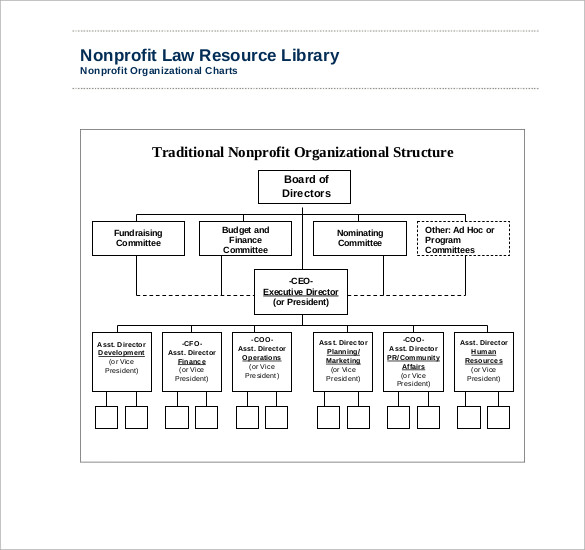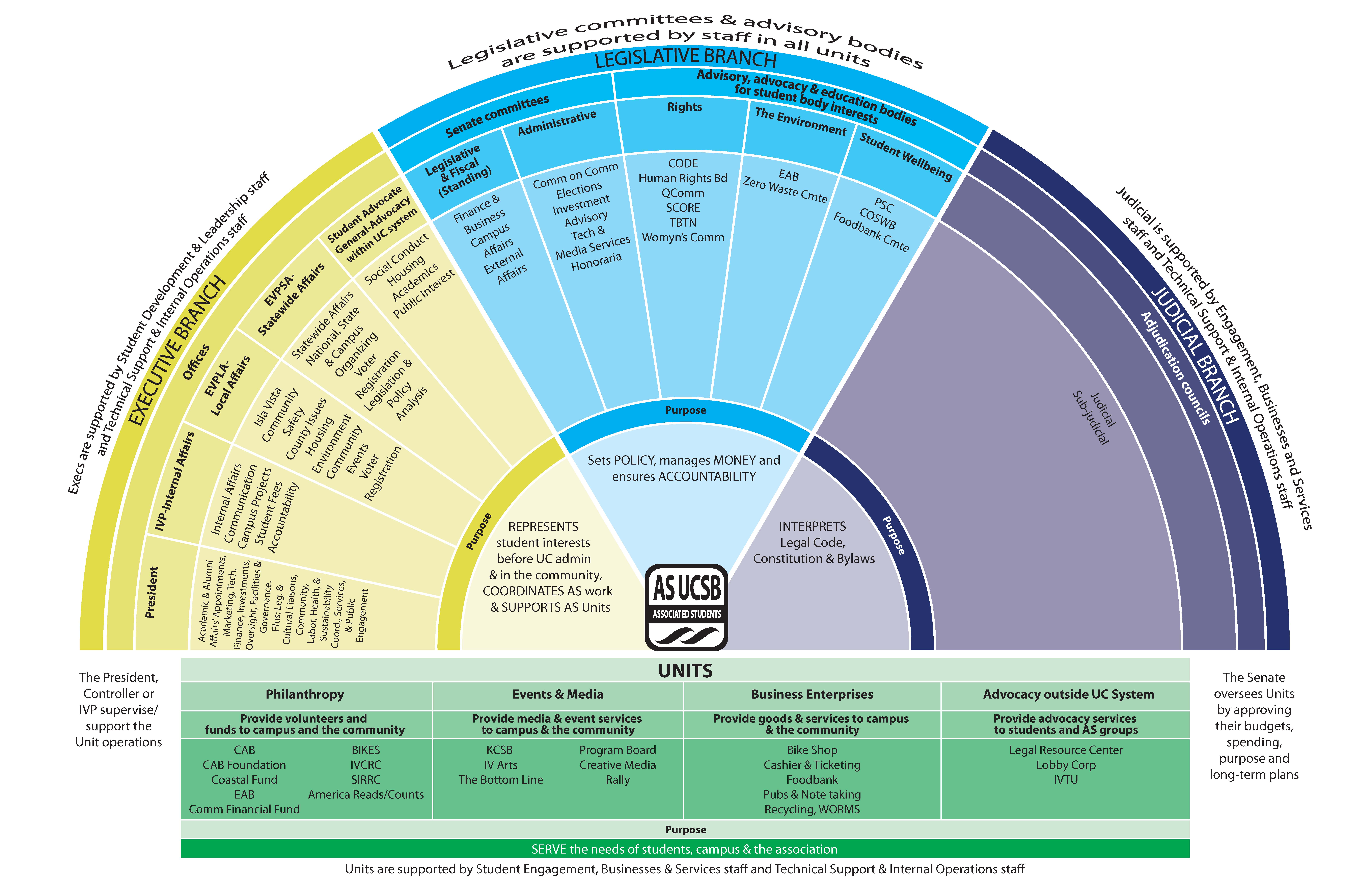Please also refer to the FAQs and 'Notable Observations' at the bottom of this page for information about the basic architecture of this chart of accounts.
Sep 25, 2018 In particular, here are three important charts your nonprofit should be using. Nonprofits use organizational structure charts to visually communicate the structure of their organizations. These charts show who reports to who and helps clarify complicated organizational structures both internally and externally. Nonprofit Organizational Charts Tax-Exempt Organization Reference Chart Traditional Nonprofit Organizational Structure Organizational Structure of Private Foundations Methods of Appointment to Nonprofit & Foundation Boards Honorary & Adjunct Boards Nonprofit with Advocacy & Commercial Components Nonprofit With Advocacy & Commercial Components B.
Non-Profits have a different way of looking at things, though there are similarities between them and their 'for-profit cousins'.Management Structure. The org chart shows the individual roles and chain of command within the. Apr 29, 2020 The business plan can be used throughout the life of a nonprofit, changing as the organization does. A startup's business plan may be quite brief, while a mature nonprofit plan may be quite long. Business plan formats for nonprofits vary according to the type of organization, but several elements seem to show up frequently. The chart of accounts for a non profit organization differs from a normal business in that the balance sheet is referred to as the statement of financial position, the income statement is referred to as the statement of activities or statement of operations, and as the non profit organization is governed by trustees and does not have owners, the equity side of the accounting equation is.
FAQs:
Q: What is a Debit?A:
 Here's a quick run-down of the big picture, in regard to basic accounting principles.
Here's a quick run-down of the big picture, in regard to basic accounting principles. Q: If Cash is a Debit Balance on my books, why does the bank call (a positive cash balance) a Credit Balance?
A: It's a simple matter of perspective. Your positive cash balance is a liability to the bank - a Credit Balance.
Cash is a Debit Balance On your books (an Asset); but your check-book balance is Credit on the bank's books (a Liability: A Loan Payable).
Organizational Chart Non Profit
Q: How many accounts and sub-accounts should I have?A: You should have at least 10 fewer accounts than you can keep track of!
This is important to note.
Categories and sub-categories can provide useful information about your organization, but only if they are accurate. If your staff is not going to be consistent about how things are coded, then your sophisticated chart of accounts will steer the books into much worse shape than if you had kept things simple.
Don't design a structure that no one is willing to follow. Too much detail is counter-productive, miss-informative, expensive, and hard to trouble-shoot; and too little detail means you have lost an opportunity to provide useful analytical information to the users of your financial statements.
Our recommendation: Err on the side of keeping things simple.
Observations about the Non-Profit Chart of Accounts:
Restricted Funds - These are funds that have been designated toward specific expenses/initiatives by the donor.Un-spent Restricted funds are listed on the Balance Sheet till they are used as intended. We recommend restricted funds be placed in the Net Asset Section of the Balance Sheet, though some like them as Other Liabilities.
Net Assets. This designation resembles 'Owners Equity' on a for-profit chart of accounts. It is literally, Assets minus Liabilities and, just like a for profit organization, it is where historical earnings are accumulated.
The first two digits of Income Statement accounts (XX - XXXX).
If a non-profit has more than one emphasis, it should consider splitting the income statement into separate departments (or classes), which can be done with the first two digits (depending on the accounting system you're using, it could also be the last two digits, or a separate field).
01 - Ministry
02 - Fund-raising (aka Development)
03 - Overhead (Management).
Account Number 4100 - Reimbursable Expenses: Amounts billed to reimburse the company for expenses incurred on behalf of clients, etc.. A markup could be included with this. A mark-up of 20% is typical for most industries.
Account Number 4900 - Reimbursable Expenses: These are Expenses incurred on behalf of the client: Expenses that are expected to be reimbursed.
 4901 - Reimbursable Expenses - Meals and Entertainment: Meals and Entertainment are separated for tax purposes. This Makes things easier at year-end! Easier = Less expensive.
4901 - Reimbursable Expenses - Meals and Entertainment: Meals and Entertainment are separated for tax purposes. This Makes things easier at year-end! Easier = Less expensive. Operating Expenses: Everything in this category is listed in alphabetical order for quick reference, and to keep things simple.
6121 - Capitalized Purchases - Contra Account:
 Using this contra account is an effective way to capitalize an asset without losing track of total expenditures by category. I hope that make sense!
Using this contra account is an effective way to capitalize an asset without losing track of total expenditures by category. I hope that make sense! Organization Chart Non-profit Template
6951 - Travel - Meals and Entertainment: Meals and Entertainment are separated for tax purposes. Your tax accountant needs this information at year end, so it will save time if you segregate it for her/him.
Whether you’re launching a brand-new nonprofit or just trying to get more organized, it can be hard to know where to begin. When it comes to accounting, the first step is to create a chart of accounts. The chart of accounts (or COA) is a numbered list that categorizes your financial activity into different accounts and subaccounts. Every nonprofit organization has a unique COA that depends on your specific programs, revenue sources, and activities. But in general, your COA should follow some standard guidelines and numbering conventions.
A chart of accounts is commonly numbered as follows:
Statement of Financial Position
Assets: 1000-1999
Liabilities: 2000-2999
Equity/Net Assets: 3000-3999
Statement of Activities
Revenue: 4000-4999
Expenses: 5000+
This means that any assets owned by your nonprofit (like bank accounts, investments, property, and equipment) should be numbered in the 1000 range. Liabilities (like loans, mortgages, and accounts payable) should be in the 2000 range. Your organization’s restricted and unrestricted net assets should be numbered in the 3000 range. Revenue from donations or sales should be in the 4000 range, and expenses for programs, utilities, salaries, and everything else should be numbered as 5000 or above.
When you’re numbering your accounts, follow these three rules:

Keep things simple. You don’t need separate accounts for paper, pens, envelopes, and staples; you can just have one account for office supplies. If you need more detailed layers of organization, you can add class codes.
Group similar accounts together. It’s easier to read and understand your financial reports when your accounts are listed in a logical order.
Leave room for growth. You can’t group similar accounts together if all the numbers are already taken! Think about how your needs might change in the future, and leave gaps between your account numbers so you can add new accounts later.
Below is a sample chart of accounts for nonprofit organizations. Remember, this is only an example – your nonprofit might have different types of revenue and expenses, or own different assets that will alter your chart of accounts. Use this as a guideline, and think carefully before you finalize your account numbers. Build a solid framework that you can easily add to in the years to come!
Organization Chart Non-profits
1010: Checking (Bank Account)
1030: Savings (Bank Account)
1110: Investments
1210: Accounts Receivable
1310: Inventory
1410: Prepaid Expenses
1510: Property
1530: Equipment
1590: Accumulated Depreciation
1690: Accumulated Amortization
2010: Accounts Payable
2100: Accrued Salaries
2110: Accrued Payroll Taxes
2115: Accrued Employee Benefits
2150: Accrued Property Taxes
2200: Deferred Revenue
2300: Credit Card Payable
3100: Unrestricted Net Assets
3200: Temporarily Restricted Net Assets
3300: Permanently Restricted Net Assets
4010: Donations and Grants – Individuals
4020: Donations and Grants – Government
4030: Donations and Grants – Foundations
4110: Special Events – Sponsorships
4120: Special Events – Auction
4130: Special Events – Ticket Sales
4200: Program Revenue
4300: Sales of Merchandise
4500: Membership Dues
4600: In-Kind Contributions
4700: Temporarily Restricted Income
4800: Permanently Restricted Income
4900: Interest Income
4910: Dividend Income
5000: Salaries and Wages
5010: Payroll Taxes
5030: Health Insurance
5040: Dental Insurance
5050: Retirement Benefits
5060: Workers Compensation
5070: HSA Contributions
6000: Depreciation Expense
6100: Amortization Expense
7000: Cost of Goods Sold
8000: Fundraising Expenses
8100: Special Event Expenses
8200: Program Expenses
8300: Marketing and Branding
8310: Advertising
8410: Contract Services
8420: Accounting Services
8430: Legal Services
8510: Rent Expense
8520: Utilities
8525: Telecommunications
8530: Maintenance and Repairs
8540: Office Supplies
8550: Printing and Copying
8560: Postage and Shipping
8570: Licenses and Permits
8610: Bank Fees
8620: Merchant Service Fees
8810: Board Expenses
8820: D&O Insurance
8890: Miscellaneous Expenses